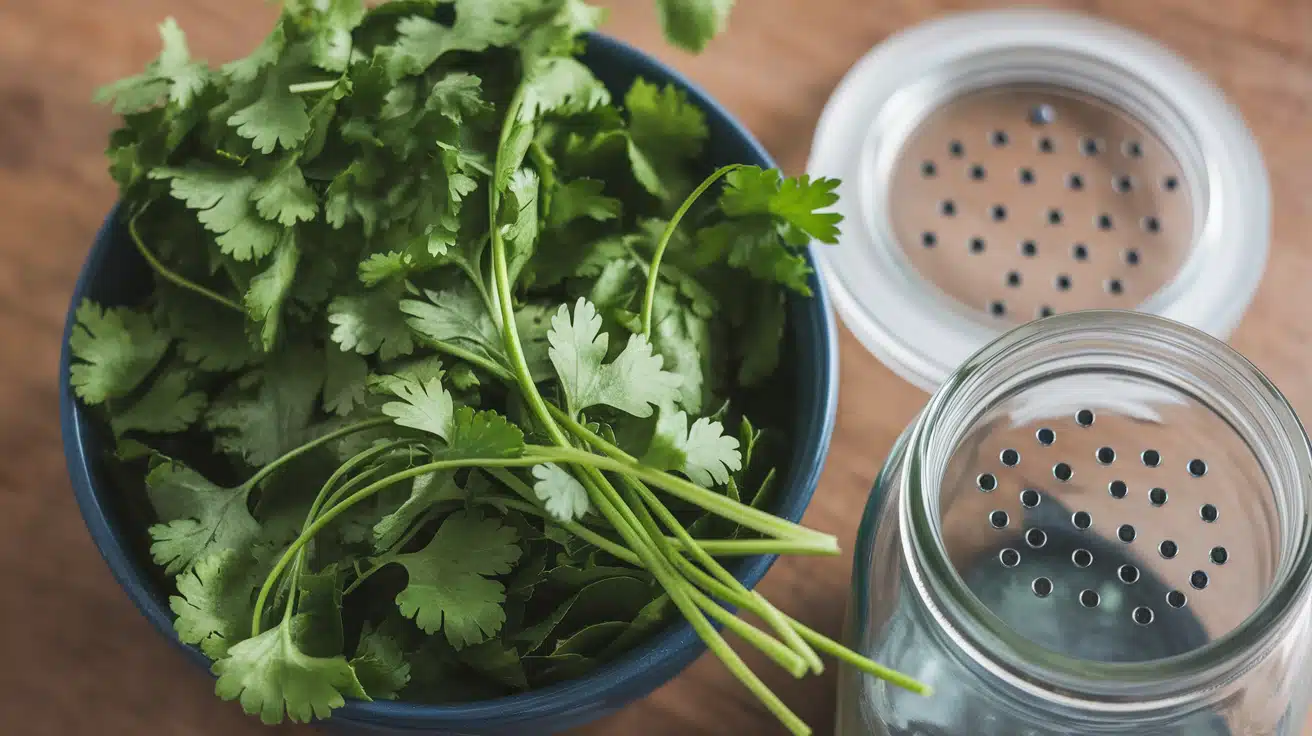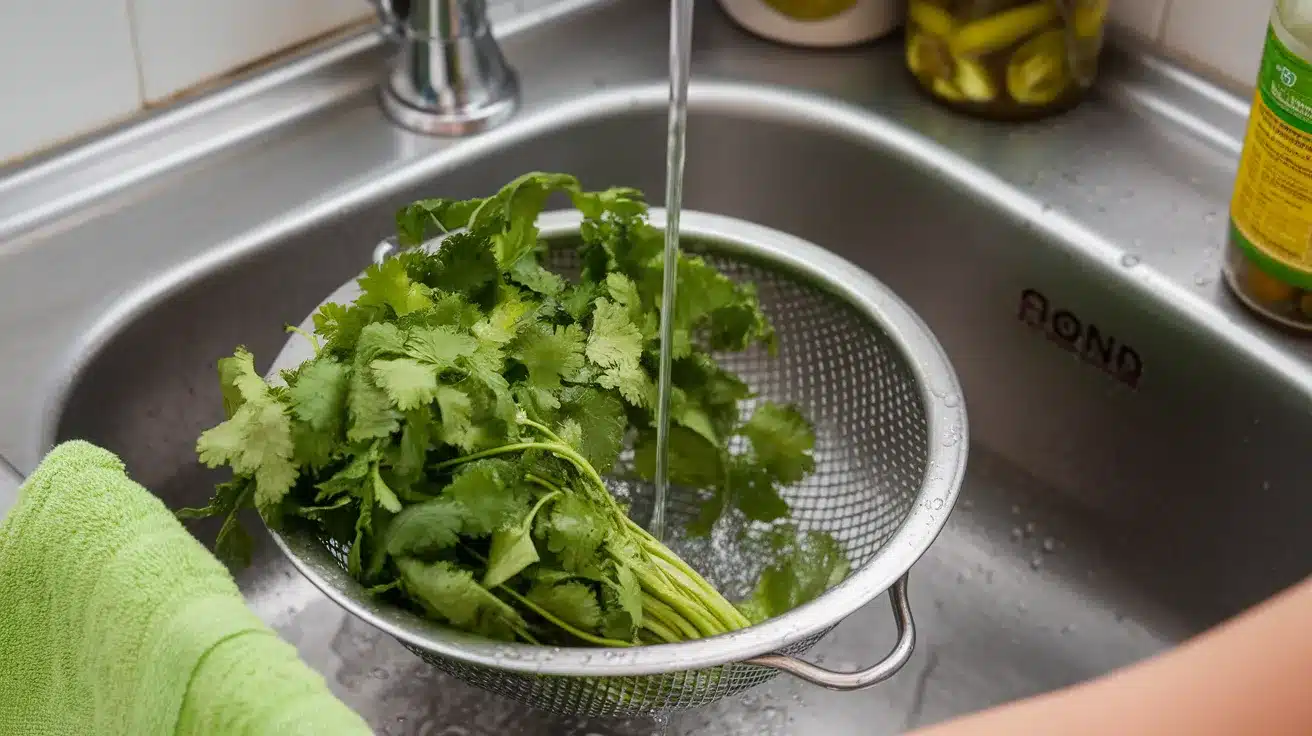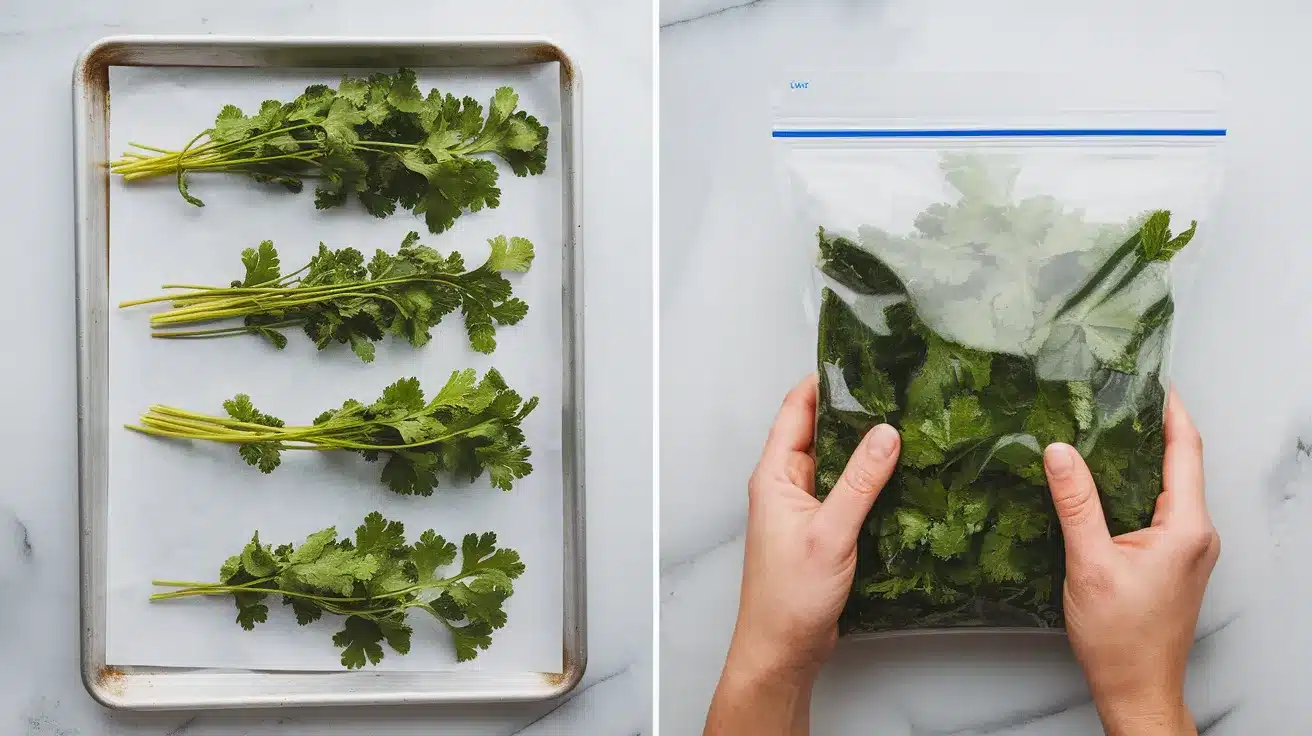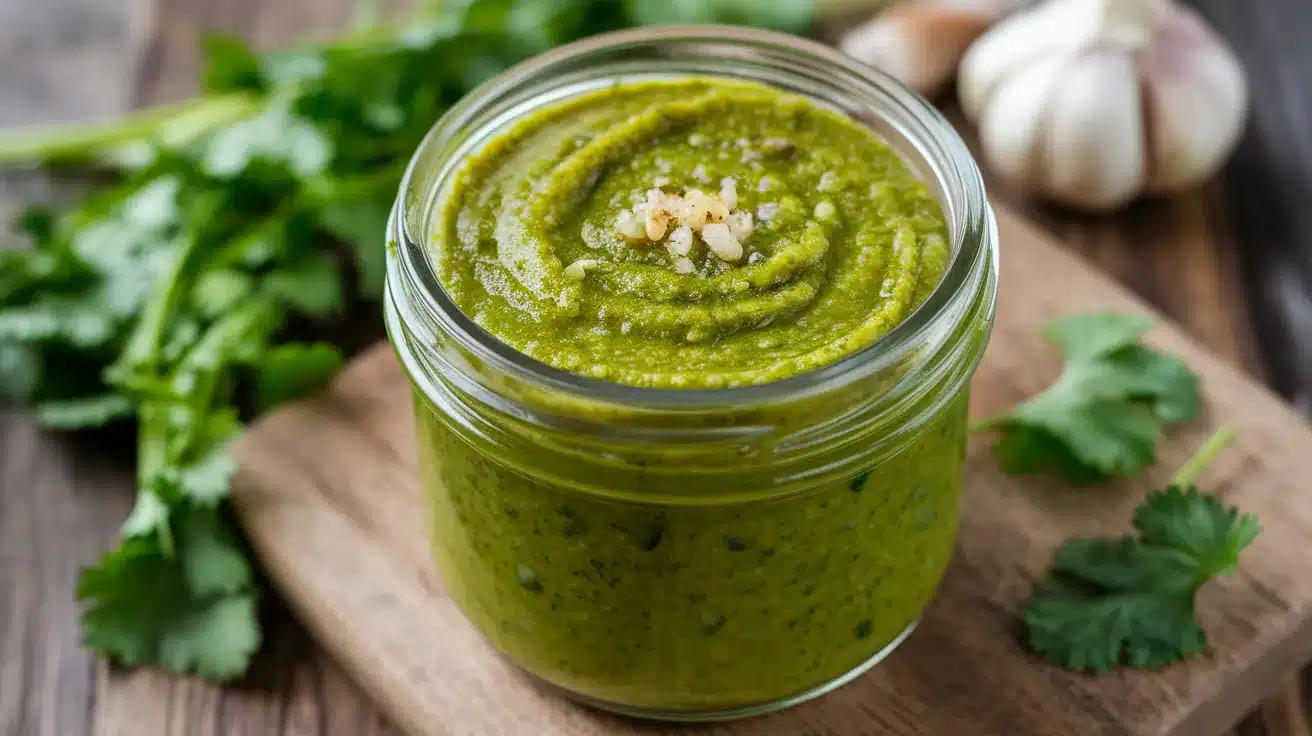Fresh cilantro wilts fast and goes bad within days, leaving you frustrated when recipes call for this flavorful herb.
You buy a bunch, use a few sprigs, and watch the rest turn yellow and slimy in your fridge. This common kitchen problem wastes money and ruins meal plans.
We’ll show you exactly how to preserve cilantro by freezing using three simple methods that keep its fresh taste for months. No more throwing away expensive herbs or rushing to use them before they spoil.
This guide covers ice cube freezing, flash freezing, and making cilantro paste, as well as the best way to store cilantro long-term.
You’ll learn when to freeze, methods, and instructions, as well as how to use frozen cilantro in your favorite dishes. Say goodbye to herb waste forever.
Why Freeze Cilantro?
Freezing is the most effective method for storing cilantro long-term, as it retains more nutrients and flavor than other methods. When you dry cilantro, it loses its fresh taste and becomes bland.
Refrigerating only works for a few days before it wilts and turns yellow. But freezing locks in that bright, fresh flavor for months. You can preserve cilantro by freezing without any waste – no more throwing away slimy herbs from your fridge.
Frozen cilantro retains its green color and nutritional value, making it ideal for use whenever needed. Additionally, it saves money since you can purchase cilantro in bulk when it’s affordable and freeze it for later use.
When to Freeze Cilantro?
- The ideal freshness stage for freezing cilantro is when the leaves are bright green and crisp, ideally within 1-2 days of purchase.
- Signs your cilantro is ready for preservation: Look for firm stems, vibrant green leaves, and a strong fresh smell – avoid any yellow or wilted parts.
- When to freeze fresh cilantro: The best time is immediately after washing and drying it completely, before any signs of wilting appear.
Best Methods to Keep Cilantro Fresh for Weeks
Tired of tossing wilted cilantro just days after buying it? Learn simple, proven methods to keep your cilantro crisp, flavorful, and ready to use for weeks without sacrificing taste or texture.
Method 1: Freezing Cilantro in Ice Cube Trays
Step-by-step instructions:
- Washing, drying, and chopping: Rinse cilantro under cold water and pat it completely dry with paper towels. Chop the leaves and tender stems into small pieces.
- Adding water or oil: Fill ice cube trays halfway with chopped cilantro, then add water or olive oil to completely cover the herbs.
- Freezing and storing: Freeze for 4-6 hours until solid, then pop out the cubes and store them in labeled freezer bags.
Best use cases: Cilantro ice cubes for cooking work perfectly in soups, stews, curries, and sauces where you want instant herb flavor without thawing.
Method 2: Flash Freezing Whole or Chopped Leaves
Step-by-step instructions:
- Flash-freezing on a tray: Spread clean, dry cilantro leaves in a single layer on a baking sheet without touching each other.
- Transferring to freezer bags: After 2-3 hours of freezing, quickly transfer the frozen leaves into airtight freezer bags.
- Tips for labeling and storing: Write the date on bags and use within 6 months. Remove as much air as possible to prevent freezer burn.
This method shows you how to freeze cilantro without losing flavor because the quick freezing process keeps the cell structure intact.
Method 3: Cilantro Herb Paste or Pesto
Step-by-step instructions:
- Making a paste: Blend fresh cilantro with olive oil and optional garlic until smooth. Use about 1/4 cup oil per large bunch of cilantro.
- Storage tips: Pour the paste into ice cube trays or small freezer-safe jars, leaving space for expansion.
Versatile usage ideas: This cilantro pesto for freezer storage works great in marinades, salad dressings, sandwich spreads, and as a base for green sauces.
How to Use Frozen Cilantro in Cooking
Thawing tips: You don’t need to thaw frozen cilantro for most cooking – add it directly to hot dishes. For cold applications, thaw in the fridge for 30 minutes and drain excess water.
Cooking vs. garnishing applications: Use frozen cilantro in cooked dishes, such as soups, stir-fries, and sauces, where it blends in perfectly. Avoid using it as a fresh garnish, as freezing changes the texture, making it soft and less crisp.
Recipe ideas and inspiration: Try frozen cilantro recipes, such as cilantro rice, green curry, salsa verde, and herb butter. Learning how to cook with frozen cilantro opens up options for quick weeknight meals, marinades for grilled meats, and flavorful dips.
Add cilantro ice cubes to hot broths, blend frozen cilantro paste into smoothies, or mix thawed cilantro into scrambled eggs and quesadillas for an instant burst of fresh flavor.
Cilantro Freezing Mistakes to Avoid
| Mistake | Why It’s a Problem | How to Avoid It |
|---|---|---|
| Over-washing the cilantro | Traps excess moisture, causing sogginess and decay | Rinse lightly and shake off water thoroughly before drying |
| Freezing while still wet | Leads to ice crystals, loss of texture, and flavor | Pat dry with paper towels or use a salad spinner before freezing |
| Freezing large stems | Stems freeze unevenly and may taste bitter | Use mostly leaves, or finely chop stems if included |
| Not using an airtight container | Causes freezer burn and absorbs odors | Store in sealed freezer bags or silicone trays with lids |
| Skipping labeling | Makes it hard to track freshness or the method used | Label with date and method (e.g., “cilantro – oil cubes – 06/25”) |
| Freezing old or wilted cilantro | Results in poor flavor and texture post-thaw | Freeze when herbs are still vibrant and green |
Storage Tips to Maximize Shelf Life
- Use airtight freezer bags, silicone trays, and glass jars. Choose freezer-safe containers that seal completely; freezer bags, silicone ice trays, or glass jars with tight lids work best.
- Labeling: date + method: Write the freezing date and method on each container so you know when to use it and how it was prepared.
- Avoiding freezer burn and discoloration: Remove all air from bags and containers, then store at 0°F or below to prevent ice crystals and color loss.
- Store frozen cilantro properly: Follow these freezer tips for herbs to keep cilantro fresh for up to 6 months without losing its taste or nutrients.
Conclusion
Freezing cilantro is the best way to store it long-term without waste or loss of flavor. These three simple methods – ice cubes, flash freezing, and herb paste – keep your cilantro fresh for months instead of days.
You can now buy cilantro in bulk, freeze it properly, and always have this flavorful herb ready for cooking.
Why does this matter? You’ll save money, reduce food waste, and never miss out on the fresh taste of cilantro in your favorite recipes. From soups to marinades, frozen cilantro works just as well as fresh in cooked dishes.
What’s next? Start with the ice cube method this week – it’s the easiest way to begin. Pick up extra cilantro on your next grocery trip and try freezing it using these techniques.
Your future self will thank you when you’re making a quick curry or soup and can grab a cilantro cube from the freezer.
Have you tried freezing cilantro before? Share your results in the comments below!
Frequently Asked Questions
What’s the Best Way to Preserve Cilantro?
Freezing cilantro in ice cube trays with oil or water keeps it fresh longest while maintaining flavor and nutrients.
Can you Freeze Cilantro for Later Use?
Yes, you can freeze cilantro for up to 6 months using ice cubes, flash-freezing, or making an herb paste.
What Do You Do with an Abundance of Cilantro?
Freeze extra cilantro immediately using any of the three methods to prevent waste and save money.





